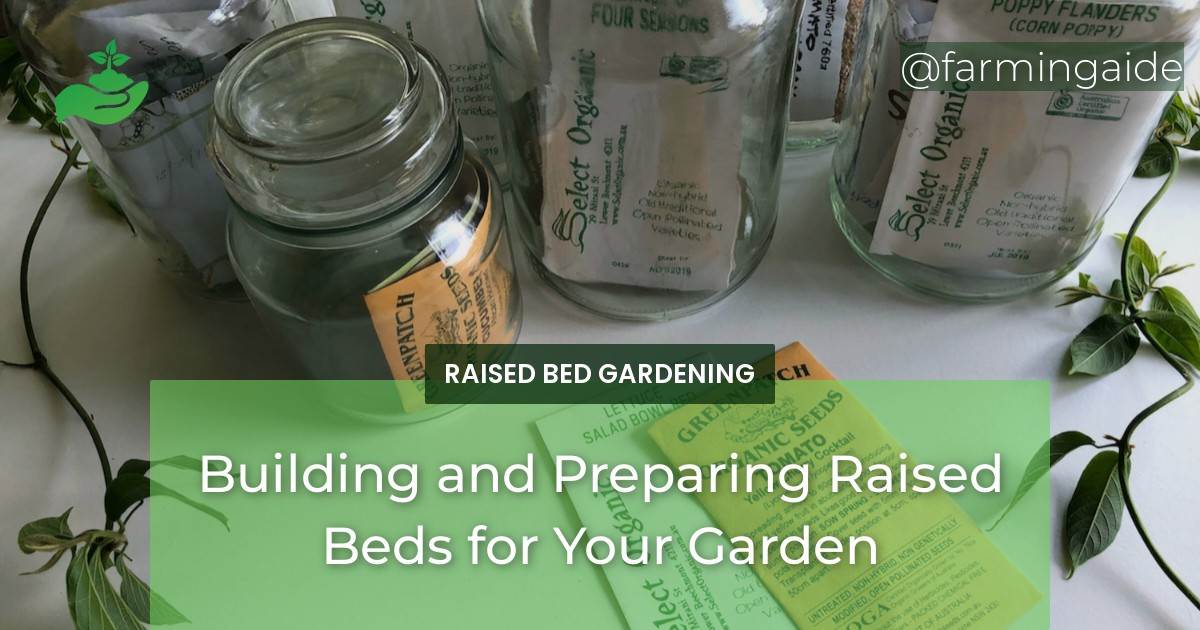Are you tired of constantly bending over to tend to your garden? Have you considered building raised beds? Not only do raised beds provide ease and convenience, they also allow for better drainage and soil quality. In this article, we will cover everything you need to know to build and prepare raised beds for your garden.
Table of Contents
Selecting Materials for Your Raised Beds
Before you begin building your raised beds, you must choose the construction material that will best suit your needs. Here are some common options to consider:
Wood
Wood is a popular choice for building raised beds due to its affordability and ease of use. Cedar and redwood are great options as they are naturally resistant to decay. Pressure-treated lumber should be avoided as it can leach harmful chemicals into the soil.
Concrete Blocks
Concrete blocks are another popular option for building raised beds. They are durable, long-lasting, and provide a modern look to your garden. However, they can be quite heavy and difficult to move.
Recycled Materials
If you’re looking for an eco-friendly option, consider using recycled materials such as old pallets or corrugated metal. Just make sure to avoid any materials that may contain harmful chemicals.
Other Options
There are many other options to consider when choosing the construction material for your raised beds. Some include straw bales, rocks, or even old tires. Just make sure to consider the pros and cons of each option before making your final decision.
Step-by-Step Bed Building Process
Now that you’ve selected the construction material for your raised beds, it’s time to start building! Here is a step-by-step process to follow:
Measuring and Marking
The first step is to measure and mark the area where you want to build your raised bed. Use stakes and string to create a clear outline of the bed.
Digging and Leveling
Next, remove any grass or vegetation within the marked area. Use a shovel to level the ground and create a smooth surface for your raised bed to rest on.
Assembling the Bed
Now it’s time to assemble the bed. If using wood, cut the boards to size and connect them at the corners using screws or brackets. If using concrete blocks, stack them on top of each other, making sure they are level and secure.
Filling the Bed with Soil
Finally, fill the raised bed with soil. Use a high-quality soil mix that is specifically formulated for raised beds. Make sure to fill the bed to the top, leaving enough room for watering.
ALSO READ
Preparing the Bed for Planting
Now that your raised bed is built, it’s time to prepare it for planting. Here are some important steps to follow:
Adding Compost and Fertilizer
Before planting, add compost and fertilizer to the soil. This will help to improve the soil quality and provide essential nutrients to your plants.
Choosing the Right Plants
When selecting plants for your raised bed, consider the amount of sunlight the area receives, the climate in your region, and the type of soil you have. Some popular options for raised beds include tomatoes, peppers, and lettuce.
Planting the Bed
Now it’s time to plant your raised bed! Make sure to follow the planting instructions for the specific plants you’ve chosen. Be sure to give each plant enough space to grow and thrive.
Watering and Maintenance
Finally, don’t forget to water your raised bed regularly and provide proper maintenance. This includes removing any weeds, checking for pests, and pruning plants as needed.
By following these steps, you can create a beautiful and productive raised bed garden that will provide you with fresh produce all season long.
RELATED ARTICLES:


